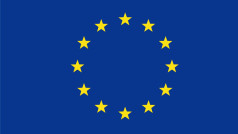When it comes to waste management, it is almost always about rates. These are now slightly lower than in the previous version of the package. By 2025, 60 per cent of municipal waste has to be either reused or recycled. This target is scheduled to go up to 65 per cent by 2030. 70 per cent of construction and demolition waste has to be recycled by 2020. The basis for calculating recycling targets is the input of the final recycling process. According to the Commission, the final recycling process begins “when no further mechanical sorting operation is needed and waste materials enter a production process and are effectively reprocessed into products, materials or substances”. In order to avoid additional administrative work, exceptions can be made under strict conditions. In this case, rates can be calculated based on the output of sorting facilities. The Commission explicitly emphasises that products and components processed for reuse and metals extracted from incineration are also taken into account in calculating the recycling targets. However, no explicit differentiation has been made between reuse and recycling.
There are separate recycling targets for packaging waste. By 2025, 65 per cent of all packaging waste has to be recycled. The target goes up to 75 per cent by 2030. The Commission also proposes separate targets for various materials: wood, 60 per cent by 2025 and 75 per cent by 2030; ferrous metals, aluminium, glass, paper and cardboard, 75 and 85 per cent respectively. The different recycling targets for ferrous metals and aluminium are new. The Commission expects “significant economic and environmental benefits”, especially from the increased recycling of aluminium. There is a 55 per cent target for plastic, but no separate target for 2030. However, it is explicitly mentioned that recycling targets have been set taking into account what is technically feasible at the present time and that targets for 2030 may be revised, depending on the success of the member states, technological development, types of plastic on the market and the demand for recycled plastics. Organic waste has to be collected separately in general.





